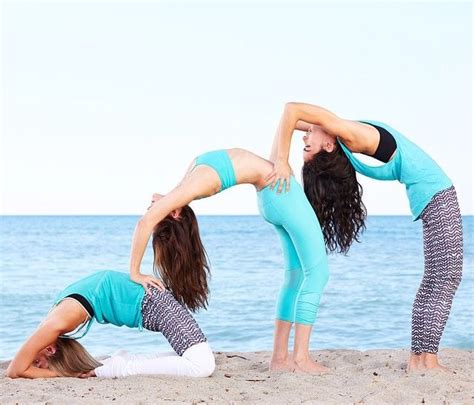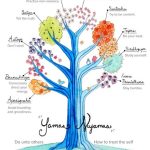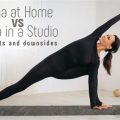How to Find Your Perfect Yoga Match in 3 Simple Steps
Yoga is more than just a physical exercise—it’s a pathway to mental and spiritual wellness. But with a dizzying variety of yoga styles available today, it can be overwhelming to figure out which one is right for you. In this guide, we’ll help you find your yoga match in three clear steps, ensuring that your practice aligns with your unique goals, preferences, and physical condition. Whether you’re new to yoga or a seasoned practitioner, this process will help you navigate the choices to find your ideal practice.
Step 1: Identify Your Primary Goals for Practicing Yoga
The first step in finding your yoga match is to clarify what you want to achieve. People come to yoga for many different reasons, and your goals will help narrow down the styles that fit you best. Ask yourself: What are you hoping to get out of yoga?
- Physical fitness: Are you looking for a workout that builds strength, flexibility, and endurance?
- Mental clarity: Do you want to reduce stress, increase focus, or achieve mental calmness?
- Spiritual growth: Are you interested in yoga as a way to connect more deeply with your inner self or higher consciousness?
- Healing and recovery: Do you need a gentle practice to heal from an injury or cope with a chronic condition?
Once you’re clear about your objectives, you’ll be better equipped to match your goals with the most suitable yoga styles.
Key Concepts
- Hatha Yoga: A general category that includes many of the physical yoga styles. Good for beginners and those seeking physical fitness.
- Vinyasa Yoga: Focuses on fluid movements linked to breath, ideal for improving cardiovascular fitness and flexibility.
- Yin Yoga: Slow-paced practice that targets connective tissues and encourages deep relaxation—perfect for stress relief and flexibility.
- Ashtanga Yoga: A dynamic and rigorous style that follows a specific sequence of postures—great for building strength and discipline.
- Kundalini Yoga: Focuses on breath, meditation, and energy awakening through repetitive movements and chanting—good for spiritual seekers.
Step 2: Assess Your Physical Condition and Preferences
Yoga isn’t a one-size-fits-all practice. It’s essential to find a style that aligns with your current physical condition and preferences. Here are some factors to consider:
Physical Condition
- Flexibility: If you’re naturally flexible, you might enjoy styles like Vinyasa or Ashtanga. If flexibility is a challenge, consider Yin or Restorative Yoga, which can help improve flexibility gently over time.
- Strength: Styles like Power Yoga and Ashtanga focus on building strength through challenging postures and sequences.
- Injury or pain: For those recovering from injury or dealing with chronic pain, gentler styles like Hatha, Restorative, or Iyengar Yoga (which emphasizes alignment) can be helpful.
Personal Preferences
- Pace: Do you prefer a fast-paced, energetic practice? Styles like Vinyasa or Power Yoga might be a good fit. For a slower pace, Yin, Restorative, or Hatha yoga might be better.
- Setting: Are you more comfortable in a group setting or practicing alone? While most yoga classes are group-based, certain practices like Yin Yoga and Meditative Yoga may also be done solo with guided videos or apps.
- Intensity: If you want a physically demanding practice, Ashtanga or Power Yoga could challenge you. If you prefer a gentle approach, Restorative Yoga or Hatha Yoga are more suitable.
Step 3: Test Different Yoga Styles
The best way to find your perfect yoga match is by experimenting with different styles. Attend a few beginner classes, either online or in person, and see how each style feels in your body and mind. Most yoga studios offer a range of styles, so you can experience firsthand how they differ in pace, intensity, and focus.
Popular Yoga Styles to Explore
- Hatha Yoga: A great starting point for beginners, focusing on basic postures and breathing techniques.
- Vinyasa Yoga: Offers a flowing sequence of poses synchronized with breath, ideal for those looking for movement and energy.
- Yin Yoga: A slow-paced style focusing on deep stretches and mindfulness, excellent for relaxation and flexibility.
- Ashtanga Yoga: A vigorous, structured practice ideal for those who want a challenging and disciplined routine.
- Restorative Yoga: Uses props to support the body in relaxing poses—great for stress relief and healing.
Take note of how each class impacts you physically and mentally. Pay attention to how energized or relaxed you feel after each session, and observe any emotional shifts that occur during the practice. Over time, you will discover which style or combination of styles suits your needs.
Historical Context
Yoga has been practiced for thousands of years, evolving from ancient Indian traditions into the globally popular discipline we see today. Traditionally, yoga was much more focused on spiritual and mental practices than on physical postures, with an emphasis on meditation, breath control, and ethical living.
In the early 20th century, yoga began to spread to the West, and with that shift, the practice became more centered around the physical aspects. Today, modern yoga often blends ancient techniques with contemporary fitness trends, leading to the diversity of styles we now have.
Current State Analysis
The yoga landscape today is more diverse than ever, with classes available in nearly every format—from online tutorials to in-studio sessions. Modern yoga studios offer a variety of styles catering to different fitness levels and goals. Yoga is practiced for fitness, relaxation, healing, and spiritual growth by people from all walks of life. However, the rise of yoga as a commercialized practice has also sparked debates about authenticity and the dilution of traditional teachings.
Practical Applications
Yoga isn’t just for the mat—it offers practical benefits that extend into everyday life. Many practitioners report improved posture, better stress management, increased energy levels, and enhanced mental clarity as they continue with their yoga routine.
Table: Practical Benefits of Yoga by Style
| Yoga Style | Physical Benefits | Mental Benefits | Best for |
|---|---|---|---|
| Hatha | Improved flexibility, muscle tone | Calm, focused mind | Beginners, stress relief |
| Vinyasa | Increased endurance, strength | Mind-body connection | Active people, athletes |
| Yin | Deep tissue stretching | Relaxation, mindfulness | People with tight muscles, stress |
| Ashtanga | Full-body strength, flexibility | Discipline, focus | Advanced practitioners |
| Kundalini | Core strength, energy circulation | Spiritual awakening | Spiritual seekers |
Case Studies
Several case studies show how finding the right yoga practice can lead to significant improvements in quality of life. Take Sarah, for instance—a corporate worker struggling with chronic back pain due to long hours of sitting. After trying different yoga styles, she found Iyengar Yoga to be the most beneficial for her recovery due to its focus on alignment and use of props. After six months of consistent practice, her pain diminished, and her posture improved dramatically.
Another case is Mark, an athlete recovering from a knee injury. He discovered that Yin Yoga helped him regain flexibility and reduce muscle tightness, accelerating his recovery process.
Stakeholder Analysis
Yoga impacts several stakeholders, from individual practitioners to the broader community. Here’s a breakdown:
- Practitioners: Whether for fitness, mental clarity, or spiritual growth, individuals benefit in various ways depending on their chosen style.
- Yoga instructors: Teachers need to cater to a wide range of students with differing goals, ensuring safety and inclusion.
- Studios and online platforms: The demand for diverse yoga styles pushes studios and online providers to offer varied and accessible options.
Implementation Guidelines
When starting a new yoga practice, it’s essential to keep a few guidelines in mind:
- Start slow: If you’re new to yoga, begin with beginner classes and gradually increase intensity as you become more comfortable with the postures.
- Listen to your body: Avoid pushing yourself too hard, especially in challenging poses. Yoga is about progress, not perfection.
- Find a qualified instructor: Whether online or in-studio, seek teachers with credentials and experience in the specific yoga style you’re interested in.
Ethical Considerations
As yoga continues to gain popularity worldwide, it’s essential to address the ethical issues surrounding the commercialization of an ancient practice. Critics argue that some aspects of yoga’s spiritual roots are being overshadowed by the focus on physical fitness and aesthetics. It’s crucial for instructors and practitioners to approach yoga with respect for its origins and mindfulness of its deeper purpose.
Limitations and Future Research
While yoga offers numerous benefits, it’s not a cure-all. Limitations include its varying effectiveness depending on individual goals, physical condition, and preferences. More research is needed to understand yoga’s long-term impact on mental health and chronic disease management. Future studies should also explore how different populations, such as seniors or those with disabilities, can best adapt yoga practices to their needs.
Expert Commentary
Yoga experts emphasize the importance of finding a style that aligns with both your physical and mental needs. As Dr. Samantha Lee, a prominent yoga therapist, notes, “Yoga is not a one-size-fits-all practice. Each person has a unique body and mind, so it’s crucial to explore different styles to discover what resonates with you. A consistent, mindful practice is where the true transformation lies.”
Ultimately, yoga is a personal journey that evolves over time. Whether you seek physical fitness, mental peace, or spiritual growth, there’s a yoga practice out there for you. Take your time, listen to your body, and embrace the process of discovery.








